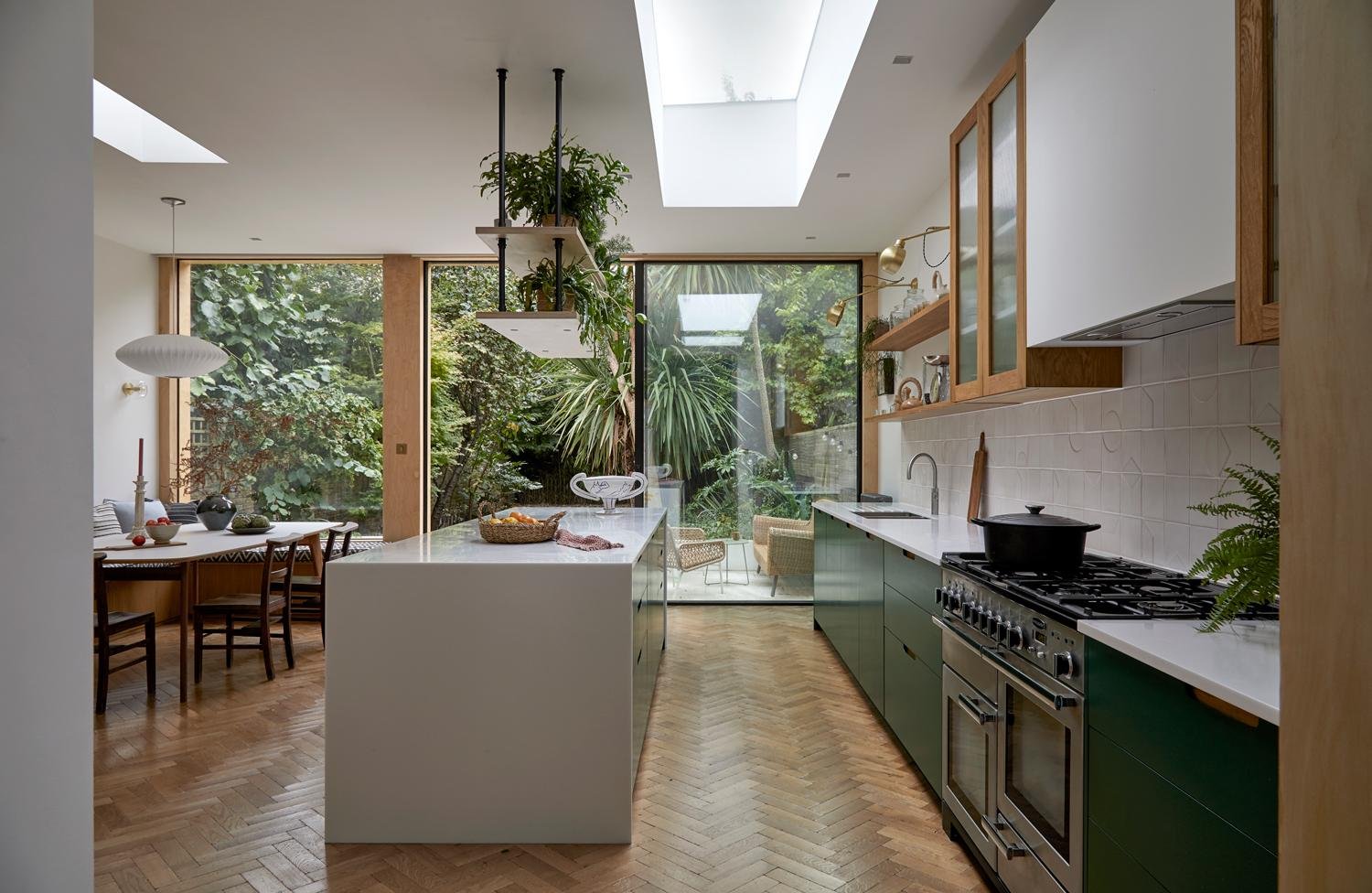Understanding Permitted Development Rights in East London: What You Can Build Without Permission
If you're a homeowner in East London considering extending, renovating, or adding features to your home, one of the first questions you’ll ask is: Do I need planning permission? In many cases, certain works can be done without applying for planning permission these are known as Permitted Development Rights. But the rules are complex, and local boroughs may impose additional restrictions. This guide will walk you through what you can build in East London under permitted development, important limits, local caveats, and how Mammoth Design & Build can help you navigate the process.
What Are Permitted Development Rights?
Permitted Development Rights (PDRs) are rights granted by Parliament that allow certain works to be carried out without needing to apply for planning permission.
These rights apply to houses (not flats, maisonettes, or new builds under certain conversions) under the General Permitted Development Order (GPDO).
However, PDRs have conditions, limits, and exclusions. You must meet them in full for your work to qualify as “permitted” and avoid a planning application.
Importantly, Permitted Development does not override building regulations or party wall rules—you will still need to ensure compliance.
Also note: your local council might issue an Article 4 Direction in certain areas (e.g. conservation zones) which removes or restricts some permitted development rights locally.
What You Can Build Under Permitted Development (for Houses)
Here are common types of work you might undertake under PDRs, subject to conditions and limits. Always check your local borough rules to confirm.
| Type of Work | Common PDR Class | What You Can Do Without Full Planning | Key Limits / Conditions |
|---|---|---|---|
| Single-storey rear extension | Class A | You may extend the rear of your house without planning permission if within size limits | Rear extension must not go beyond certain depth (e.g. up to 4m for detached houses, 3m for semi/terraced) under PDR; cannot exceed 50% of original garden area (GOV.UK) |
| Side extensions / enlargements | Class A | Small side extensions may qualify under PDR | Must not be more than half the width of original house, single storey only, and height restrictions apply (GOV.UK) |
| Loft / roof extensions | Class B / C | You can alter roof or add dormers under certain limits | Roof extensions must not exceed height of existing roof, must not overhang, and must adhere to materials similar in appearance (GOV.UK) |
| Outbuildings, sheds & garden rooms | Class E | You can build a detached structure in your garden under some conditions | Only single storey, maximum height 4m if pitched, 3m otherwise; within 2m of boundary height limit is 2.5m; must not cover more than 50% of garden area (GOV.UK) |
| Porches | Class D | You can add a porch to your house entrance without needing full planning | Porch must be single storey, not exceed 3m height, and not extend beyond 3m from wall facing highway (GOV.UK) |
| Other alterations | (windows, chimneys, hard surfaces etc) | Many internal and external modifications may be allowed under PDR | But these often have limits and may require prior approval if in designated areas (GOV.UK) |
Additional Local Considerations in East London
Because East London comprises many boroughs—like Newham, Tower Hamlets, Hackney, Barking & Dagenham, Redbridge, Waltham Forest—the permitted development rules may be further constrained depending on your location. Here are some crucial caveats:
Conservation Areas & Heritage Zones: Many East London streets are in conservation areas. In such zones, your local authority may have removed PDRs through Article 4 Directions, meaning you’ll need planning permission for work that would normally be permitted.
Local Article 4 Directions: Some boroughs, e.g. Islington, have Article 4 Directions that restrict permitted development rights to maintain architectural character.
Newham’s rules: Newham explicitly notes that some areas are subject to Article 4 directions and that permitted development rights do not apply to flats or properties under certain conditions.
Previous planning permissions: If a property was previously granted planning permission that removed PDRs as a condition, those rights may not be available.
Limits on size: Even if your development meets PDR criteria, exceeding depth, height, or coverage limits may force you to apply for planning.
Party wall & neighbour impacts: Extensions close to boundaries require neighbour consultation, and party wall notices may be legally required.
Prior Approval: Some PDRs require “prior approval” by the council before proceeding (for example, for larger extensions) where specific impacts must be assessed.
Examples to Illustrate in East London
Rear extension in a terraced house in Hackney
A homeowner wants to extend 3 metres to the rear, single storey. This could fall under PDR if within the depth limit and no overbearing impact. If the property is in a conservation area, the local council may require planning anyway.Garden room in a bungalow in Barking
A small, single-storey garden room (Class E), up to 3 m height for a flat roof, located 2 m from boundary. If no Article 4 direction, this might go ahead under PDR. But if the site is in a heritage area, planning may still be required.Roof dormer in East London, e.g. Stratford
Adding a dormer under Class B/C may be permitted if it does not exceed certain dimensions, does not overhang, and materials match. In conservation areas, this may require permission.
Risks of Getting It Wrong & Why Expert Help Is Wise
Building under “assumed” PDR when your property is subject to restrictions can lead to enforcement notices and legal hassle.
Neighbour objections or local authority intervention may force removal or redesign.
Misinterpreting limits (height, depth, coverage) can invalidate your PDR claim.
Uninsulated or badly built extensions might fail building regulations even when no planning is needed.
How Mammoth Design & Build Can Help You
We carry out a local planning audit to check if your property is subject to Article 4 or special restrictions.
We design your extension to fit within permitted development rules wherever possible.
If PDR is not suitable, we handle full planning permission applications on your behalf.
We provide detailed 3D visuals and technical drawings to satisfy council and building control requirements.
We manage all neighbour liaison, party wall notices, and compliance.
We ensure quality workmanship, building regulation compliance, and a smooth delivery.
Book your Free Consultation with
one of our manager today!
✔️ A dedicated Account Manager
✔️ Keep your project on time & budget
✔️ Qualified and experienced team
☎️ Speak to an expert
We’re always up for 30 minute phone consultations to help you with your project.
E: hello@mammoth-builds.co.uk
M: 07878 719 909


